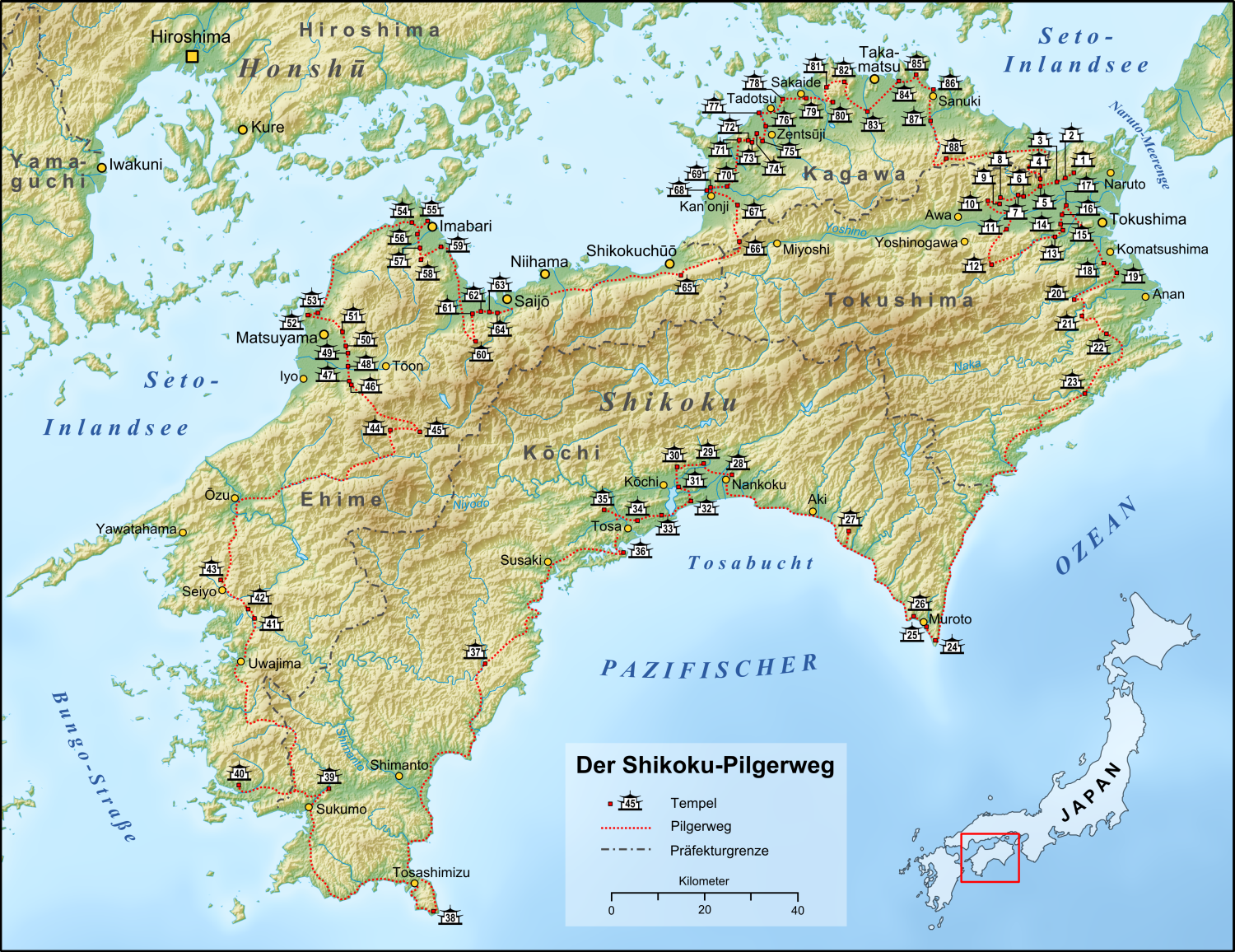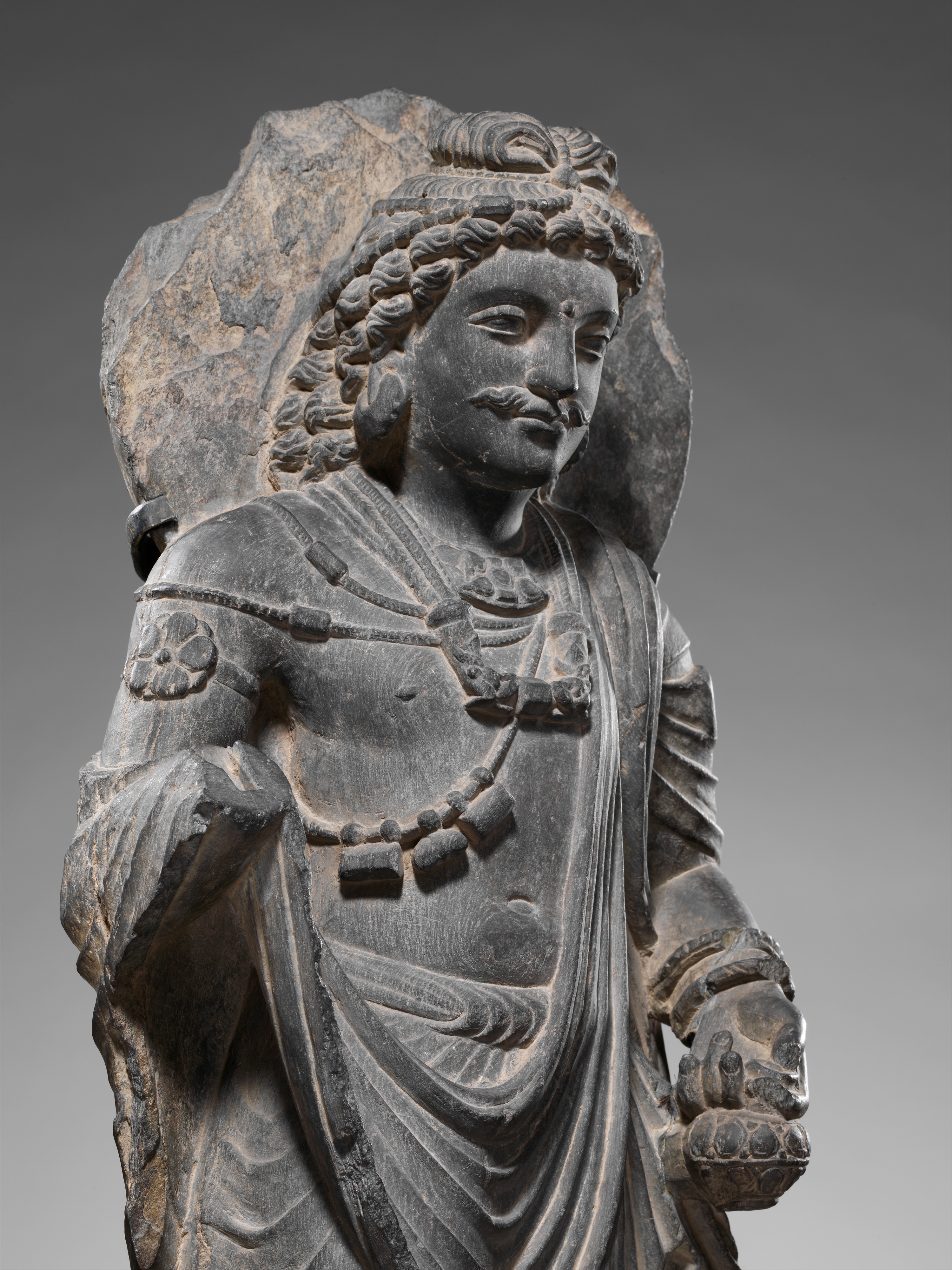|
Jōraku-ji (Tokushima)
Joraku-ji (Joraku Temple) (Japanese: 常楽寺) is a Koyasan Shingon temple in Tokushima, Tokushima Prefecture, Japan. Temple # 14 on the Shikoku 88 temple pilgrimage. The main image is of Miroku Bosatsu ( Maitreya Bodhisattva). History :*The temple was built during the Kōnin (弘仁) era (810-824 CE). :*In the Tenshō (天正) era, the temple was destroyed by Chōsokabe Motochika was a prominent ''daimyō'' in Japanese Sengoku period, Sengoku-period. He was the 21st chief of the Chōsokabe clan of Tosa Province (present-day Kōchi Prefecture), the ruler of Shikoku, Shikoku region. Early life and rise He was the son and ...'s (長宗我部 元親) force. :*In the Manji (万治) era, the temple was rebuilt with the support of Hachisuka clan (蜂須賀氏). :*In the Bunka (文化) era, the temple was moved to the present location. Cultural properties The temple's main hall and master's hall were designated as Tangible Cultural Properties of Japan on July 25, 2011. ... [...More Info...] [...Related Items...] OR: [Wikipedia] [Google] [Baidu] |
Tokushima Prefecture
is a Prefectures of Japan, prefecture of Japan located on the island of Shikoku. Tokushima Prefecture has a population of 682,439 (1 February 2025) and has a geographic area of 4,146 Square kilometre, km2 (1,601 sq mi). Tokushima Prefecture borders Kagawa Prefecture to the north, Ehime Prefecture to the west, and Kōchi Prefecture to the southwest. Tokushima, Tokushima, Tokushima is the capital and largest city of Tokushima Prefecture, with other major cities including Anan, Tokushima, Anan, Naruto, Tokushima, Naruto, and Yoshinogawa, Tokushima, Yoshinogawa. Tokushima Prefecture is located on the Kii Channel, connecting the Pacific Ocean and Seto Inland Sea, across from Wakayama Prefecture on the Kii Peninsula of the island of Honshu. Tokushima Prefecture is connected to Awaji Island across the Naruto Strait by the Ōnaruto Bridge as part of the Kobe-Awaji-Naruto Expressway, connecting the prefecture to the city of Kobe and the San'yō Expressway on Honshu. History Until ... [...More Info...] [...Related Items...] OR: [Wikipedia] [Google] [Baidu] |
Shikoku 88 Temple Pilgrimage
The or is a multi-site pilgrimage of 88 temples associated with the Buddhist monk Kūkai (''Kōbō Daishi'') on the island of Shikoku, Japan. A popular and distinctive feature of the island's cultural landscape, and with a long history, large numbers of pilgrims, known as , still undertake the journey for a variety of ascetic, pious, and tourism-related purposes. The pilgrimage is traditionally completed on foot, but modern pilgrims use cars, taxis, buses, bicycles, or motorcycles, and often augment their travels with public transportation. The standard walking course is approximately long and can take anywhere from 30 to 60 days to complete. In addition to the 88 "official" temples of the pilgrimage, there are 20 ''bekkaku'' (別格) temples, which are officially associated with the Shikoku Pilgrimage (and hundreds more ''bangai'' (番外) temples, simply meaning "outside the numbers," which are not considered part of the official 88). To complete the pilgrimage, it ... [...More Info...] [...Related Items...] OR: [Wikipedia] [Google] [Baidu] |
Miroku Bosatsu
{{disambig ...
Miroku may refer to: * Japanese for "Maitreya Buddha": as prophesied by the Buddha before entering nirvana. * Miroku, the character in the anime and manga series '' InuYasha''. * Miroku Corp., a gun manufacturer. * Miroku, a character in Naruto: Shippūden the Movie. * Miroku, a minor character in 07-Ghost. * Miroku-sama, the Honbushin religion's honorific name for their founder Ōnishi Tama Ōnishi Tama (大西 玉, November 19, 1916 – September 1, 1969) was a Japanese religious leader known as the founder of Honbushin, a Tenrikyo-based (Japanese new religion). She was the daughter of Ōnishi Aijirō, who had founded the Ho ... [...More Info...] [...Related Items...] OR: [Wikipedia] [Google] [Baidu] |
Maitreya
Maitreya (Sanskrit) or Metteyya (Pali), is a bodhisattva who is regarded as the future Buddhahood, Buddha of this world in all schools of Buddhism, prophesied to become Maitreya Buddha or Metteyya Buddha.Williams, Paul. ''Mahayana Buddhism: The Doctrinal Foundations 2nd edition.'' Routledge, 2009, p. 218. In some Buddhist texts, Buddhist literature, such as the ''Amitabha Sutra'' and the ''Lotus Sutra'', he is also referred to as Ajitā (Invincible, Unconquerable). In Tibetan Buddhism he is known as the "Lord of Love" or the "Noble Loving One" (Pakpa Jampa). The root of his name is the Sanskrit word ''maitrī'' (Pali: ''metta''; meaning friendliness, loving-kindness). The name Maitreya is also related to the Indo-Iranian languages, Indo-Iranian name Mitra.Jayarava, Visible Mantra: Visualising & Writing Buddhist Mantras, pp. 142-43. 2011 In Hinduism, Maitreya is prophesied to be the king of Shambala, which is also the birthplace of the Kalki Avatar. In all branches of Buddhism, ... [...More Info...] [...Related Items...] OR: [Wikipedia] [Google] [Baidu] |
Kōnin (era)
was a after ''Daidō'' and before '' Tenchō.'' This period spanned the years from September 810 through January 824. The reigning emperors were and . Change of era * February 9, 810 : The new era name was created to mark an event or series of events. The previous era ended and the new one commenced in ''Daidō'' 4, on the 27th day of the 9th month of 810. Events of the ''Kōnin'' era * May 30, 823 (''Kōnin 14, 17th day of the 4th month''): In the 14th year of Emperor Saga's reign (嵯峨天皇14年), he abdicated; and the succession (''senso'') was received by his younger brother, Emperor Kammu's third son. Shortly thereafter, Emperor Junna is said to have acceded to the throne.(''sokui'').Titsingh p. 102103; Brown, pp. 282; Varley, p. 44; a distinct act of ''senso'' is unrecognized prior to Emperor Tenji; and all sovereigns except Jitō, Yōzei, Go-Toba, and Fushimi have ''senso'' and ''sokui'' in the same year until the reign of Emperor Go-Murakami. Notes Reference ... [...More Info...] [...Related Items...] OR: [Wikipedia] [Google] [Baidu] |
Tenshō (Momoyama Period)
was a after ''Genki (era), Genki'' and before ''Bunroku''. This period spanned the years from July 1573 through December 1592 during the Sengoku era.Nussbaum, Louis-Frédéric. (2005). "''Tenshō''" i ''Japan encyclopedia'', p. 961 n.b., Louis-Frédéric is pseudonym of Louis-Frédéric Nussbaum, ''see'Deutsche Nationalbibliothek Authority File. The reigning emperors were and . Change of era * 1573 : The new era name was created to mark a number of regional wars. The era name was inspired by a passage from the Chinese classic ''Tao Te Ching by'' Laozi: :"Those who are at peace with nature bring all under Heaven into its correct pattern" (清静者為天下正). The era name ''Tenshō'' was suggested by Oda Nobunaga. The previous era ended, and a new one commenced in ''Genki'' 4, the 28th day of the 7th month. Events of the ''Tenshō'' era European dates up to October 4, 1582 are given in the Julian calendar. Dates since October 15, 1582 are given in the Gregorian calendar. ... [...More Info...] [...Related Items...] OR: [Wikipedia] [Google] [Baidu] |
Chōsokabe Motochika
was a prominent ''daimyō'' in Japanese Sengoku period, Sengoku-period. He was the 21st chief of the Chōsokabe clan of Tosa Province (present-day Kōchi Prefecture), the ruler of Shikoku, Shikoku region. Early life and rise He was the son and heir of Chōsokabe Kunichika and his mother was a daughter of the Saitō clan of Mino Province. His childhood name was Yasaburō (弥三郎). He is said to have been born in Okō Castle in the Nagaoka district of Tosa. Motochika was a quiet youth and his father was said to have fretted about the boy's gentle nature (he seems to have been nicknamed Himewako, or 'Little Princess'); Kunichika's worries evaporated when Motochika later proved himself a skilled and brave warrior. When Motochika came of age, his father had already begun to draw away from the Ichijō family, and Motochika would carry on his work. In 1560, at the Battle of Tonomoto, Chōsokabe Kunichika captured Nagahama castle from the Motoyama clan. In response to this, Motoyama ... [...More Info...] [...Related Items...] OR: [Wikipedia] [Google] [Baidu] |
Manji (era)
was a after ''Meireki'' and before ''Kanbun (era), Kanbun.'' This period spanned the years from July 1658 through April 1661. The reigning emperor was .Titsingh, Isaac. (1834) ''Annales des empereurs du japon'', p. 413./ref> Change of era * 1658 : The era name was changed to mark a disastrous, great fire in Edo. The previous era ended and a new one commenced in ''Meireki'' 4, on the 23rd day of the 7th month. The source of this era name comes from the Records of the Grand Historian: "When the common people know their place, then all under heaven is ruled" (衆民乃定、万国為治) Events of the ''Manji'' era * 1658 (''Manji 1''): In the aftermath of the Great Mereiki Fire, the shogunate organized four all-samurai, all-Edo firefighting squads. * 1658 (''Manji 1''): Yanagisawa Yoshiyasu is born. Yoshiyasu will become Shōgun Tokugawa Tsunayoshi, Tsunayoshi's favorite courtier and chief counselor.Bodart-Bailey, Beatrice. (2006). ''The Dog Shogun: The Personality and Polici ... [...More Info...] [...Related Items...] OR: [Wikipedia] [Google] [Baidu] |
Hachisuka Clan
The are descendants of Emperor Seiwa (850-880) of Japan and are a branch of the Ashikaga clan through the Shiba clan (Seiwa Genji) of the Minamoto clan. History Ashikaga Ieuji (13th century), son of Ashikaga Yasuuji, was the first to adopt the name Shiba. The Shiba were ''Shugo'' (Governors) of Echizen, Owari, and other provinces, and during the Ashikaga shogunate were one of three families (Shiba, Hosokawa and Hatakeyama) from which the '' Kyoto-kanryo'' (Prime Minister of the Shōgun) could be chosen. Shiba Masaaki, the descendant of Shiba Takatsune (1305–1367), established himself in Hachisuka, near the Kiso River at the border of Owari and Mino provinces, whence he took the name Hachisuka. In the 16th century, the Hachisuka clan came to prominence thanks to its head, Hachisuka Koroku. His uncle held Hachisuka Castle and he lived first in Miyaushiro Castle, which was his mother's family home. Koroku served the Oda clan, being instrumental in several of the early victori ... [...More Info...] [...Related Items...] OR: [Wikipedia] [Google] [Baidu] |

